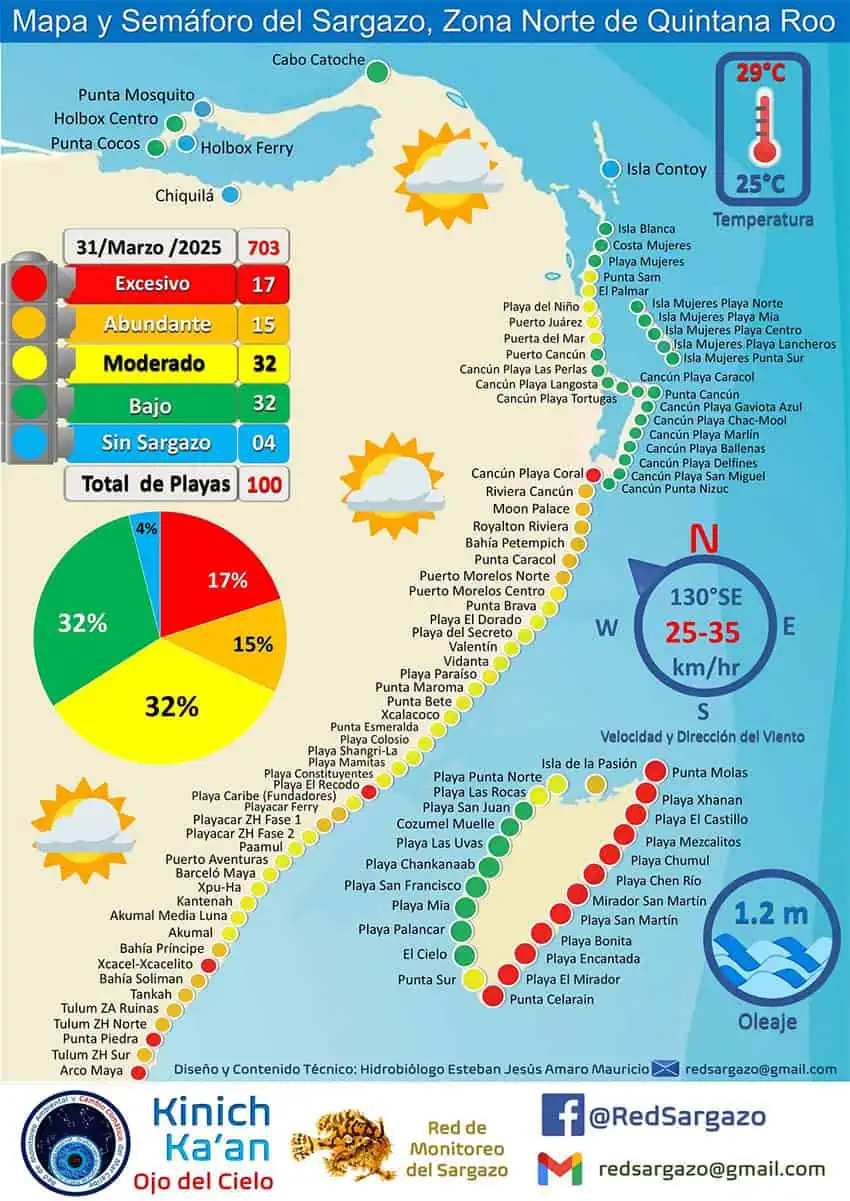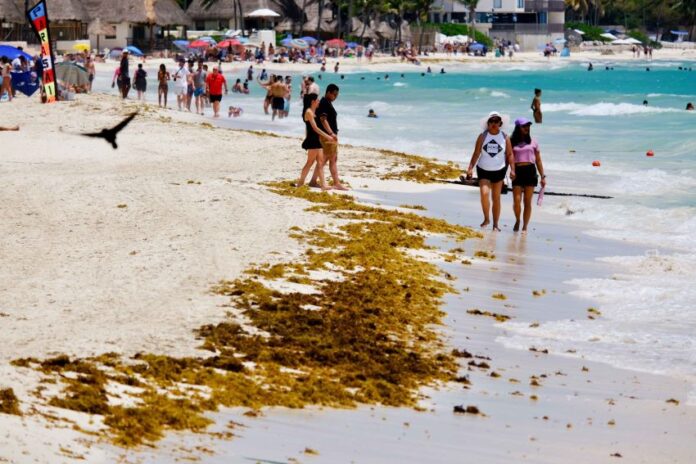The Riviera Maya on Mexico’s Caribbean coast is seeing up to 50% more seaweed on its beaches this year, after experiencing lower levels of sargassum in 2024, according to the Federal Maritime Terrestrial Zone (Zofemat).
The collection of seaweed in the popular tourist destination of Tulum increased by just over 50% during the first two months of 2025 compared to the same period last year, the municipal director of Zofemat Juan Antonio Garza reported.
Increasing quantities of sargassum seaweed have been washing ashore in the Riviera Maya since 2011, posing a challenge to local authorities as they work to keep the beaches clean and safe for tourism — a primary source of income in the region.
In January and February, Tulum collected 79 metric tons and 59 metric tons of seaweed respectively, compared to 36 metric tons in January and 50 metric tons in February 2024.
Zofemat expects to collect even more seaweed during the high sargassum season from May to November, with higher seaweed levels expected for 2025, particularly affecting the Tulum coast.
Garza has a team of over 50 people dedicated to the daily collection of seaweed across several protected natural areas in Tulum. He emphasized that coordination between state and federal authorities is key to addressing the issue.
The increased prevalence of seaweed not only deters tourism but also has a negative ecological impact on the region, as it can damage marine ecosystems.
“Sargassum brown tides have degraded water quality and caused the death of seagrass beds in coastal areas,” wrote Eduardo Gabriel Torres Conde, a marine science researcher for the National Autonomous University of Mexico (UNAM), in his doctoral thesis. “Natural recolonization of seagrass beds in these areas can take decades and is especially challenging due to sediment movement and wave energy in near-coastal areas.”
When large quantities of sargassum on beaches decompose, they produce hydrogen sulfide, which can harm humans, prompting symptoms such as nausea, watery eyes, headaches and loss of sleep, according to Rosa Rodríguez Martínez, an academic at the Reef Systems Unit of the Institute of Marine Sciences and Limnology (UNAM).
Rodríguez said that while there was no proven immediate or significant risk for residents or tourists, it is recommended that pregnant women, children, the elderly and people with illnesses such as asthma and heart failure limit their exposure.

The Riviera Maya tourism industry was pleasantly surprised by the lower amounts of sargassum arriving on Mexico’s Caribbean beaches in 2024. The Tulum offices of the federal Environmental Ministry reported that sargassum collection in Tulum was 75% lower in the first five months of 2024 compared to during the same January to May period in 2023.
The Quintana Roo Sargassum Monitoring Network offers a daily social media update on seaweed levels in the region.
With reports from La Jornada Maya, Reportur, Debate and National Geographic
